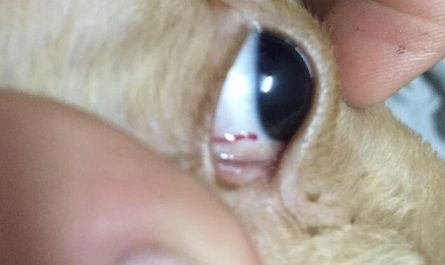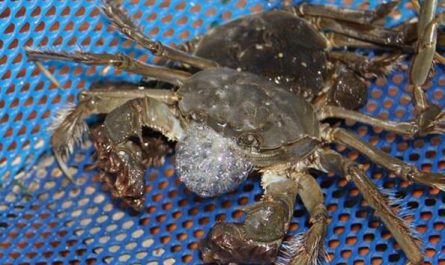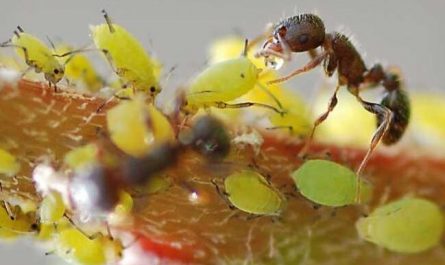The reason why bats are mammals
Birds lay eggs and hatch small birds with eggs. Bats do not lay eggs, little bats give birth to kittens. The female bat feeds the little bats with its own milk. Just like cats, cows and humans, they are called mammals. Birds have feathers. Bats are very different from birds. They do not have feathers on their bodies. Instead, they have a thin layer of soft hair, exactly the same as the fur on mammals. Birds have wings, and they fly with wings. Bats have the same limbs as mammals, except that their forelimbs have changed. A thin wing membrane has grown between the forelimbs, hindlimbs and tail. Bats fly on this wing membrane.
The sexual cycle of the entire bat colony is synchronized, so most of the mating activity occurs within a few weeks. The gestation period is from 6 to 7 weeks to 5 to 6 months. Many types of females move to a special breeding habitat after pregnancy. Bats usually give birth to 1 to 4 litters. The cubs are hairless or less hairy when they are born, and often cannot see or hear for a period of time. The cubs are taken care of by the parents for 5 weeks to 5 months, depending on the type.
Almost all bats rest during the day and search for food at night. This habit allows them to invade sleeping prey without being harmed by other animals or high temperature light. Bats usually like to live in isolated places, such as caves, crevices, burrows or buildings, and they also live on trees and rocks. They always hang upside down and rest. They generally gather in groups, ranging from dozens to hundreds of thousands. Bats with echolocation capabilities can produce short, high-frequency sound pulses, which are reflected back when they encounter nearby objects. Bats hear the reflected echo and can determine the location and size of prey and obstacles. This ability requires the close integration of highly sensitive ears and vocal centers with auditory centers. Individual bats may also communicate in the form of sound pulses. A small number of bats rely on smell and vision to find food. There is a mouth that emits ultrasonic waves with a full 20,000 Hz. Objects will be reflected into the ears, and nerves will be transmitted to the brain at a speed of more than 300 kilometers per second for judgment.
Although they have wings, they look a lot like birds. But they have no feathers or lay eggs. They have the characteristics of mammals: females give birth to pups and feed them with milk.
The habits of bats
People often use the term “birds and beasts” to describe birds and beasts, but this statement is sometimes not correct, because some birds can’t fly, such as ostrich, emu, kiwi and penguin; There are also some beasts that do not go, such as living in the sea
Cetaceans in the ocean, etc., while bats do not walk on the ground like ordinary terrestrial beasts, but can fly in the air like birds. Certain species of bats are masters of flight. They can turn around very quickly in narrow places. Bats are the only mammals that can flap their wings. Other flying mammals, such as flying squirrels, just glide in the air by their wing-shaped skin. ! At night, bats find their way and hunt by sound waves. They emit sound waves that humans cannot hear. When this sound wave encounters an object, it will return like an echo, so the bat can distinguish whether the object is moving or stationary, and how far away it is. Long-eared bats prey on insects in flight, and it can also catch insects from leaves. Its big ears enable it to receive echoes.
Bats are the only beasts that can really fly. Although they do not have the feathers and wings of birds, and their flying ability is much worse than that of birds, their forelimbs are very developed. The upper arms, forearms, metacarpal bones, and phalanges are very long. A thin and hairy layer of soft and tough skin from the end of the phalanx to the humerus, side of the body, hind limbs and tail forms the unique flying organ of bats—winged hands. There are also records about bats in ancient China that they also live in stalactite caves, called fairy mice. Bats there can drink water from the cave to get longevity. After thousands of years, their body colors have also changed dramatically. The dark color turned into white all over, which is probably why they are called fairy rats.
Bats use waves to determine whether there are obstacles ahead and use this to change the flight path. In the past, many people said that bats had poor eyesight, but it was actually a big mistake. Many scientists have pointed out that the eyesight of bats is not bad, and that different kinds of bats have different eyesight. The use of ultrasound in bats is not necessarily related to their eyesight.
Natural enemy
The main natural enemies of burrowing bats are snakes and lizards; the natural enemies of arboreal (some fruit bats) are also some raptors and cats. Other natural enemies of bats are humans. For example, the Guam bat was extinct because of predation by the locals.
feeding habits
Bats have a wide range of food habits. Some species like nectar and fruits, while others like to eat fish, frogs, insects, suck animal blood, and even eat other bats. Generally speaking, big bats generally feed on fruit or nectar, while most small bats feed mainly on insects.
There are various types of bats that eat: fruits, fish, pollen, and even blood. Most bats prey on insects while flying at night, and each bat can distinguish its own sound waves, which means that even if it preys with other bats, it will not be disturbed by other sound waves.
Bats that feed on insects have echolocation systems to varying degrees, so they are called “live radar”. With this system, they can fly and catch food in a completely dark environment, use echolocation under a lot of interference, and send out wave signals without affecting normal breathing. The snouts and noses of their heads have structures called “nose lobes”, and there are also very complicated special skin folds around them. This is a peculiar biological wave device that can emit waves. Continuously emit high-frequency biological waves. If you encounter obstacles or flying insects, these biological waves can be reflected back, and then received by their extraordinary large auricles, so that the feedback information can be analyzed in their tiny brains. This kind of biological wave detection sensitivity and resolution are extremely high, so that they can not only distinguish the direction according to the echo, locate their own flight path, but also distinguish different insects or obstacles to effectively avoid or hunt. Bats rely on accurate echolocation and extremely soft membranes to hover freely in the air. They can even fly with dexterous curves and constantly change the direction of waves to prevent insects from interfering with its information system and attempting to escape.
Bat species distribution
Bats are one of the most widely distributed and most evolved mammalian groups in the world. Except for the remote desert islands in the north and south poles and the oceans, various terrestrial ecological environments on the earth are used by them. In the process of evolution: they flew into the sky to avoid competition with other terrestrial and marine beasts. The highly evolved echolocation system allowed bats to avoid competition with most birds in the air and take advantage of a unique environment Niche-the dark sky.
Pterodactyls can be divided into two suborders: the big bat suborder and the small bat suborder, also known as fruit-eating bats and insectivorous bats. Just like their names, the former are larger and mostly feed on fruits. For example, the famous fox bat has a giant wingspan of up to 90 cm. The latter is much smaller than the former. In addition to insectivorous, it also eats flesh and blood. , But there are also members with the same eating habits as the big bat. Batidae is a family under the suborder Little Bats, with about 300 species. There are more than 900 species of bats in the world, and there are about 81 species in my country, which is the second largest group of mammals after rodents. They can be roughly divided into two categories: big bats and small bats. Large bats are distributed in tropical and subtropical regions of the eastern hemisphere. They are larger in size and primitive in body structure, including 1 family of Pteropidae. Small bats are distributed in the tropical and temperate regions of the eastern and western hemispheres. They are smaller in size and more specialized in body structure. They include more than ten families including Rhinolophidae, Hoofed Bats, Leaf-mouthed Bats, Vampire Bats, Bats, etc. .






